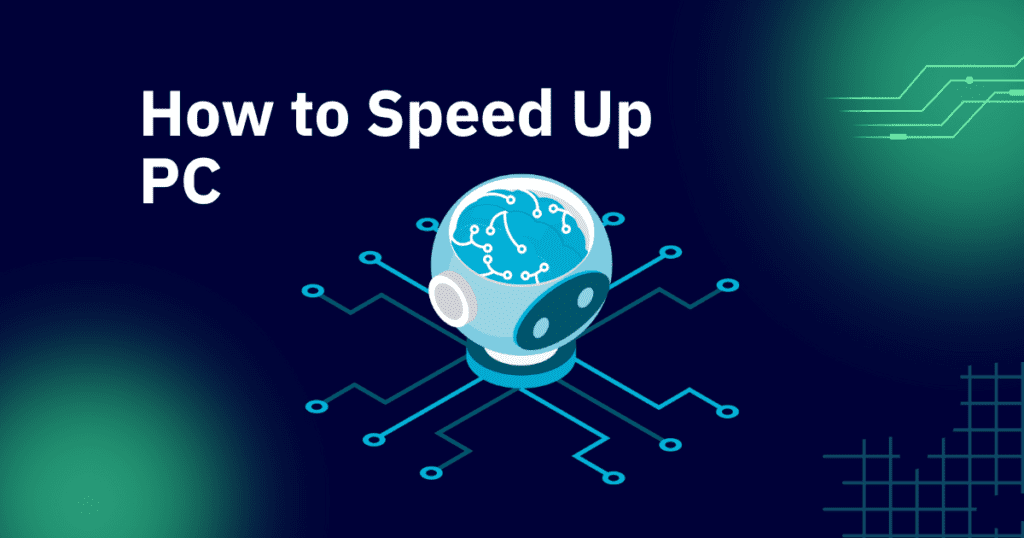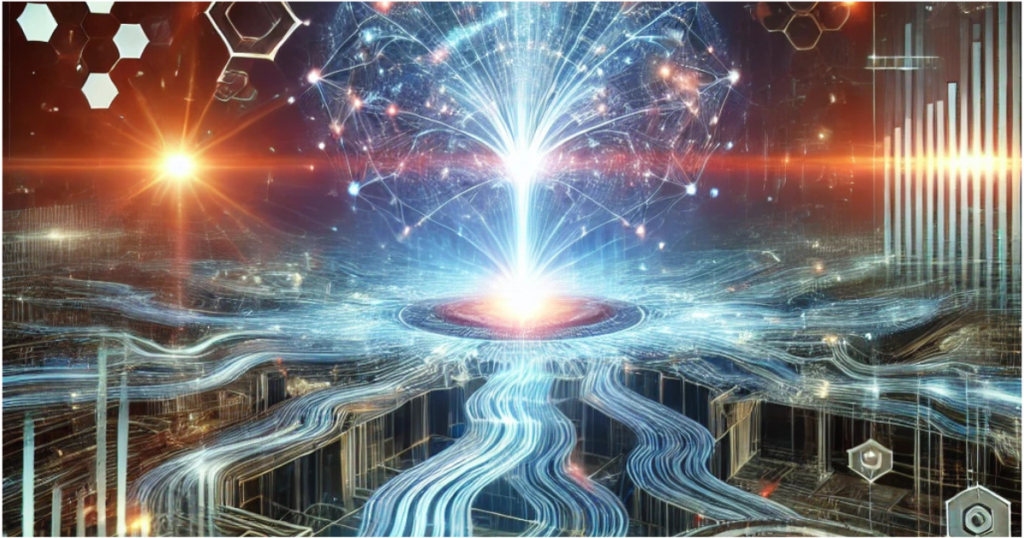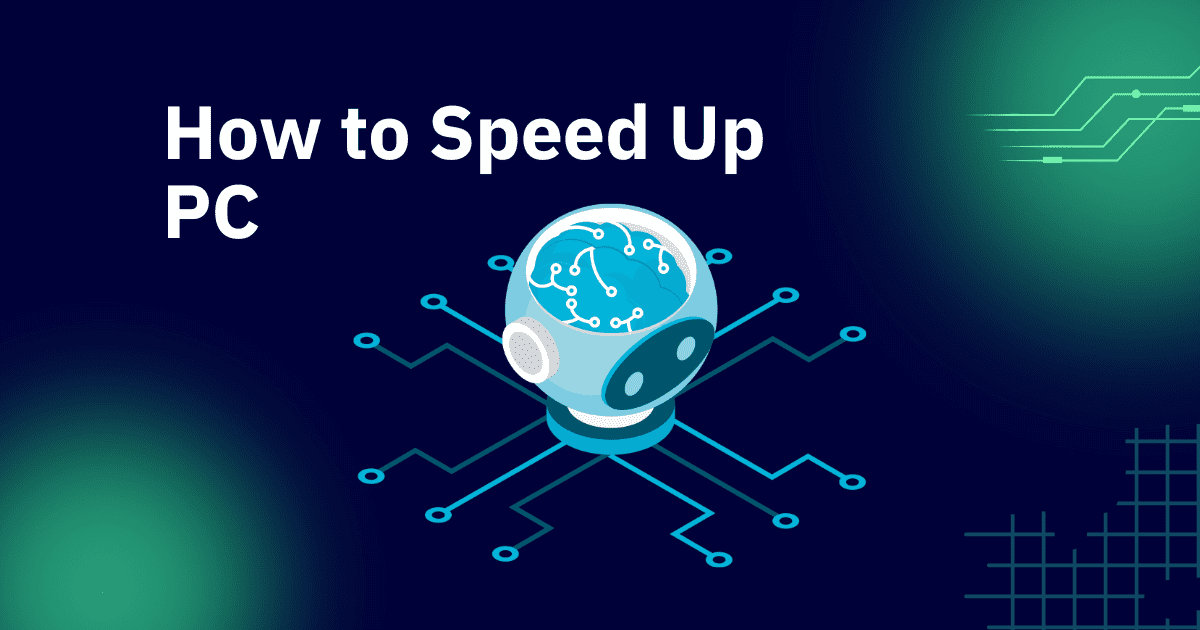Is your PC running slower than usual? A sluggish computer can be frustrating, especially when you’re trying to work, game, or browse the web. The good news is that you don’t need to be a tech expert to speed up your PC. In this guide, we’ll walk you through how to speed up your PC fastly using practical tips and tricks. Whether you’re using Windows 10, Windows 11, or an older version, these methods will help you optimize your computer’s performance.

Why Does Your PC Slow Down?
Before diving into the solutions, it’s important to understand why your PC slows down. Common causes include:
- Too many startup programs consuming resources.
- Low disk space on your hard drive.
- Outdated software or drivers.
- Malware or viruses affecting performance.
- Fragmented files (for HDD users).
By addressing these issues, you can significantly speed up your PC fastly and enjoy a smoother experience.
1. Clean Up Your Disk Space
One of the easiest ways to speed up your PC fastly is by freeing up disk space. Over time, your hard drive accumulates unnecessary files, such as temporary files, cached data, and old downloads. Here’s how to clean it up:
Steps to Clean Up Disk Space
- Open Disk Cleanup (search for it in the Start menu).
- Select the drive you want to clean (usually C:).
- Check the boxes for files you want to delete (e.g., temporary files, recycle bin).
- Click OK and then Delete Files.
For a more thorough cleanup, consider using third-party tools like CCleaner.
2. Uninstall Unnecessary Programs
Over time, you may have installed programs you no longer use. These programs take up valuable space and can slow down your PC. Here’s how to remove them:
Steps to Uninstall Programs
- Go to Control Panel > Programs > Programs and Features.
- Sort the list by size or date to identify unused programs.
- Select the program and click Uninstall.
Removing bloatware and unnecessary software can instantly speed up your PC fastly.
3. Disable Startup Programs
Many programs automatically start when you boot up your PC, slowing down the startup process. Disabling these programs can help speed up your PC fastly.
Steps to Disable Startup Programs
- Press Ctrl + Shift + Esc to open Task Manager.
- Go to the Startup tab.
- Right-click on programs you don’t need and select Disable.
Focus on disabling non-essential programs like chat apps or updates.
4. Upgrade to an SSD
If you’re still using a traditional hard drive (HDD), upgrading to a solid-state drive (SSD) can dramatically speed up your PC. SSDs are faster, more reliable, and consume less power than HDDs.

Benefits of an SSD
- Faster boot times.
- Quicker file transfers.
- Improved overall performance.
If you’re unsure how to upgrade, check out our guide on how to upgrade your PC hardware for step-by-step instructions.
5. Update Your Operating System and Drivers
Outdated software can cause compatibility issues and slow down your PC. Regularly updating your operating system and drivers ensures optimal performance.
Steps to Update Windows
- Go to Settings > Update & Security > Windows Update.
- Click Check for updates and install any available updates.
Steps to Update Drivers
- Press Win + X and select Device Manager.
- Right-click on a device and select Update driver.
Keeping your system up-to-date is a simple yet effective way to speed up your PC fastly.
6. Scan for Malware and Viruses
Malware and viruses can significantly slow down your PC by consuming resources or corrupting files. Running a thorough scan can help identify and remove these threats.
Steps to Scan for Malware
- Use built-in tools like Windows Defender (Windows Security).
- Open Windows Security from the Start menu.
- Go to Virus & threat protection and click Quick scan.
For more advanced protection, consider using reputable antivirus software like Malwarebytes or Norton.
7. Optimize Your Web Browser
If your PC slows down while browsing the web, your browser might be the culprit. Here’s how to optimize it:
Tips to Speed Up Your Browser
- Clear cache and cookies regularly.
- Disable or remove unnecessary extensions.
- Use a lightweight browser like Mozilla Firefox or Microsoft Edge.
For more tips, check out our guide on how to optimize your browser for better performance.
8. Adjust Visual Effects
Windows comes with various visual effects that can slow down your PC, especially on older hardware. Adjusting these settings can help speed up your PC fastly.
Steps to Adjust Visual Effects
- Right-click on This PC and select Properties.
- Click Advanced system settings > Settings under Performance.
- Select Adjust for best performance or customize individual settings.
9. Defragment Your Hard Drive (HDD Only)
If you’re using an HDD, defragmenting your drive can improve performance by organizing fragmented files.
Steps to Defragment Your Drive
- Search for Defragment and Optimize Drives in the Start menu.
- Select your drive and click Optimize.
Note: SSDs do not need defragmentation.
10. Add More RAM
If your PC struggles with multitasking, adding more RAM can help speed up your PC fastly. RAM (Random Access Memory) allows your computer to handle multiple tasks simultaneously.
How to Check Your RAM Usage
- Press Ctrl + Shift + Esc to open Task Manager.
- Go to the Performance tab and check memory usage.
If your RAM usage is consistently high, consider upgrading to at least 8GB or 16GB.
11. Reset or Reinstall Windows
If all else fails, resetting or reinstalling Windows can give your PC a fresh start. This removes all unnecessary files and programs, restoring your PC to its original state.
Steps to Reset Windows
- Go to Settings > Update & Security > Recovery.
- Click Get started under Reset this PC.
- Choose Keep my files or Remove everything.
Conclusion
Learning how to speed up your PC fastly doesn’t have to be complicated. By following the tips above, you can optimize your computer’s performance and enjoy a faster, more efficient experience. Whether you’re cleaning up disk space, upgrading hardware, or adjusting settings, each step brings you closer to a smoother PC.
If you’re looking for more advanced solutions, check out our guide on how to upgrade your PC hardware for additional tips and tricks. Remember, regular maintenance is key to keeping your PC running at its best.
FAQs
1. How can I speed up my PC fastly?
To speed up your PC fastly, try these quick fixes:
- Clean up disk space using Disk Cleanup.
- Disable unnecessary startup programs.
- Uninstall unused applications.
- Update your operating system and drivers.
- Scan for malware and viruses.
These steps can provide immediate improvements without requiring technical expertise.
2. Will upgrading to an SSD speed up my PC?
Yes, upgrading to an SSD (Solid-State Drive) is one of the most effective ways to speed up your PC fastly. SSDs are significantly faster than traditional HDDs, offering quicker boot times, faster file transfers, and improved overall performance.
3. How do I stop programs from running at startup?
To stop programs from running at startup:
- Press Ctrl + Shift + Esc to open Task Manager.
- Go to the Startup tab.
- Right-click on unnecessary programs and select Disable.
This will reduce the load on your system during startup, helping your PC boot faster.
4. Can malware slow down my PC?
Yes, malware and viruses can significantly slow down your PC by consuming system resources, corrupting files, or running background processes. Regularly scanning your PC with antivirus software can help detect and remove these threats.
5. How often should I clean up my PC?
It’s a good idea to clean up your PC at least once a month. Regular maintenance tasks like deleting temporary files, uninstalling unused programs, and updating software can keep your PC running smoothly.
6. Does defragmenting my hard drive speed up my PC?
Defragmenting your hard drive can speed up your PC if you’re using an HDD (Hard Disk Drive). It organizes fragmented files, making them easier to access. However, if you’re using an SSD, defragmentation is unnecessary and can even reduce its lifespan.
7. How much RAM do I need to speed up my PC?
The amount of RAM you need depends on your usage:
- 4GB: Minimum for basic tasks like web browsing and document editing.
- 8GB: Ideal for multitasking and moderate gaming.
- 16GB or more: Recommended for heavy multitasking, gaming, and professional applications like video editing.
Upgrading your RAM can help speed up your PC fastly, especially if you frequently run multiple programs simultaneously.
8. What should I do if my PC is still slow after trying these tips?
If your PC is still slow after trying these tips, consider:
- Resetting or reinstalling Windows for a fresh start.
- Upgrading your hardware (e.g., adding more RAM or switching to an SSD).
- Consulting a professional to diagnose potential hardware issues.
9. Can visual effects slow down my PC?
Yes, visual effects like animations and transparency can slow down your PC, especially on older hardware. Adjusting these settings can help speed up your PC fastly:
- Right-click on This PC and select Properties.
- Click Advanced system settings > Settings under Performance.
- Choose Adjust for best performance or customize individual settings.
10. How do I know if my PC needs an upgrade?
Signs that your PC may need an upgrade include:
- Slow boot times and frequent freezes.
- Inability to run modern software or games.
- High disk or RAM usage during basic tasks.
Upgrading components like your RAM, storage, or processor can significantly improve performance.
